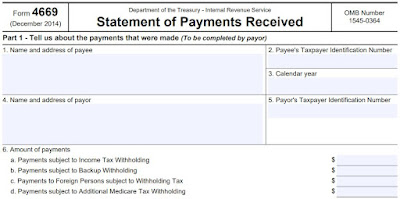I am a fan of charitable remainder trusts. These are (sometimes)
also referred to as split interest trusts.
What is an interest in a trust and how can you split it?
In a generic situation, an interest in a trust is straightforward:
(1) Someone
may have a right to or is otherwise permitted to receive an income distribution
from a trust. This is what it sounds like: if the trust has income, then
someone might receive all, some or none of it – depending on what the trust is
designed to do. This person is referred to as an “income” beneficiary.
(2) When
there are no more income beneficiaries, the trust will likely terminate. Any assets
remaining in the trust will go to the remaining beneficiaries. This person(s)
is referred to as a “remainder” beneficiary.
Sounds complicated, but it does not have to be. Let me
give you an example.
(1) I set up a trust.
(2) My wife has exclusive rights to the income for
the rest of her life. My wife is the income beneficiary.
(3) Upon my wife’s death, the assets remaining in
the trust go to our kids. Our kids are the remainder beneficiaries.
(4) BTW the above set-up is referred to as a
“family trust” in the literature.
Back to it: what is a split interest trust?
Easy. Make one of those interests a 501(c)(3) charity.
If the charity is the income beneficiary, we are
likely talking a charitable lead trust.
If the charity is the remainder beneficiary, then we
are likely talking a charitable remainder trust.
Let’s focus solely on a charity as a remainder
interest.
You want to donate to your alma mater – Michigan,
let’s say. You are not made of money, so you want to donate when you pass away,
just in case you need the money in life. One way is to include the University
of Michigan in your will.
Another way would be to form a split interest trust,
with Michigan as the charity. You retain all the income for life, and whatever
is left over goes to Michigan when you pass away. In truth, I would bet a box
of donuts that Michigan would even help you with setting up the trust, as they
have a personal stake in the matter.
That’s it. You have a CRT.
Oh, one more thing.
You also have a charitable donation.
Of course, you say. You have a donation when you die,
as that is when the remaining trust assets go to Michigan.
No, no. You have a donation when the trust is formed,
even though Michigan will not see the money (hopefully) for (many) years.
Why? Because that is the way the tax law is written.
Mind you, there is crazy math involved in calculating the charitable deduction.
Let’s look at the Furrer case.
The Furrers were farmers. They formed two CRATs, one
in 2015 and another in 2016.
COMMENT: A CRAT is a flavor of CRT. Let’s leave it alone for this discussion.
In 2015 they transferred 100,000 bushels of corn and
10,000 bushels of soybeans to the CRAT. The CRAT bought an annuity from a life
insurance company, the distributions from which were in turn used to pay the
Fullers their annuity from the CRT.
They did the same thing with the 2016 CRT, but we’ll
look only at the 2015 CRT. The tax issue is the same in both trusts.
The CRT is an oddball trust, as it delays - but does
not eliminate – taxable income and paying taxes. Instead, the income beneficiary
pays taxes as distributions are received.
EXAMPLE: Say the trust is funded with stock, which it then sells at a $500,000 gain. The annual distribution to the income beneficiary is $100,000. The taxes on the $500,000 gain will be spread over 5 years, as the income beneficiary receives $100,000 annually.
Think of a CRT as an installment sale and you get the
idea.
OK, we know that the Furrers had income coming their
way.
Next question: what was the amount of the charitable
contribution?
Look at this tangle of words:
§ 170 Charitable, etc.,
contributions and gifts.
(e) Certain
contributions of ordinary income and capital gain property.
The amount of any
charitable contribution of property otherwise taken into account under this
section shall be reduced by the sum of-
(A)
the amount of gain which would not have been
long-term capital gain (determined without regard to section 1221(b)(3)) if the
property contributed had been sold by the taxpayer at its fair market value
(determined at the time of such contribution),
This incoherence is sometimes referred to as the
“reduce to basis” rule.
The Code will generally allow a charitable
contribution for the fair market value of donated property. Say you bought Apple
stock in 1997. Your cost (that is, your “basis”) in the stock is minimal, whereas
the stock is now worth a fortune. Will the Code allow you to deduct what Apple stock
is worth, even though your actual cost in the stock is (maybe) a dime on the
dollar?
Yep, with some exceptions.
Exceptions like what?
Like the above “amount of gain which would not have
been long-term capital gain.”
Not a problem with Apple stock, as that thing is
capital gain all day long.
How about crops to a farmer?
Not so much. Crops to a farmer are like yoga pants to
Lululemon. That is inventory - ordinary income in nerdspeak - as what a
farmer ordinarily does is raise and sell crops. No capital gain there.
Meaning?
The Furrers must reduce their charitable deduction by
the amount of income that would not be capital gain.
Well, we just said that none of the crop income would
be capital gain.
I see income minus (the same) income = zero.
There is no charitable deduction.
Worst … case … scenario.
I found myself wondering how the tax planning blew up.
In July 2015, after
seeing an advertisement in a farming magazine, petitioners formed the Donald
& Rita Furrer Charitable Remainder Annuity Trust of
2015 (CRAT I), of which their son was named trustee. The trust instrument
designated petitioners as life beneficiaries and three eligible section 501(c)(3) charities
as remaindermen.”
The Furrers should have used a tax advisor. A pro may
not be necessary for routine circumstances: a couple of W-2s, a little interest
income, interest expense and taxes on a mortgage, for example.
This was not that. This was a charitable remainder
trust, something that many accountants might not see throughout a career.
Yep, don’t do this.
Our case this time is Furrer v Commissioner,
T.C. Memo 2022-100.









